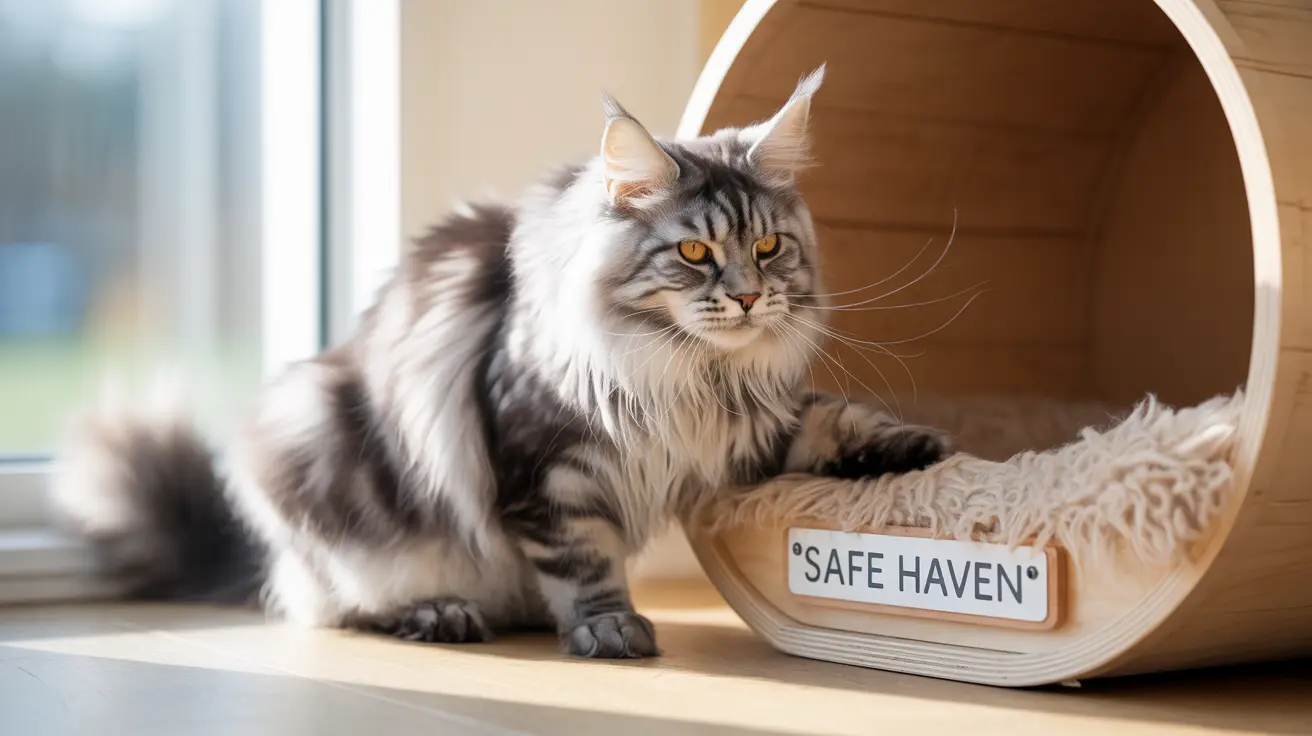When your cat is expecting kittens, providing a proper cat nesting box becomes essential for ensuring a safe and comfortable birthing experience. This comprehensive guide will help you understand everything you need to know about creating the perfect birthing environment for your pregnant queen and her soon-to-arrive kittens.
A well-designed cat nesting box not only provides security and warmth but also helps prevent complications during labor and supports proper bonding between mother and kittens. Let's explore the key aspects of creating an ideal birthing space for your expectant feline.
Essential Features of a Cat Nesting Box
The perfect cat nesting box combines several crucial design elements to ensure both mother and kittens remain safe and comfortable. The box should measure approximately 24-27 inches long by 16-27 inches wide, with walls 15-18.5 inches high. This size allows the mother cat to move freely while keeping the kittens contained.
Key features should include:
- A low entrance for easy access (6-9 inches from the bottom)
- Smooth, rounded corners to prevent injury
- Proper ventilation while maintaining warmth
- Easy-to-clean surfaces
- Adequate space for the mother to stretch and turn
Choosing the Right Materials
When selecting materials for your cat nesting box, prioritize safety and cleanliness. The most popular options include:
Plastic Options
- Large storage containers
- New, unused litter boxes
- Heavy-duty plastic totes
Wood Construction
- Sealed plywood
- Non-toxic paint or varnish
- Smooth-sanded surfaces
Temporary Solutions
- Sturdy cardboard boxes
- Modified pet carriers
- Repurposed laundry baskets
Setting Up the Perfect Location
Location plays a crucial role in whether your cat will actually use the nesting box. Choose a quiet, warm area away from household traffic and other pets. The ideal spot should be:
- Draft-free
- Away from direct sunlight
- Private and secluded
- Easily accessible for monitoring
- Temperature-controlled (80-86°F)
Maintaining the Nesting Box
Regular maintenance ensures a healthy environment for mother and kittens. Clean the box frequently by:
- Replacing soiled bedding daily
- Sanitizing surfaces regularly
- Monitoring for moisture or dampness
- Checking for wear and tear
- Adjusting temperature as needed
Frequently Asked Questions
How do I choose or build the perfect cat nesting box for my pregnant cat?
Select a box that's approximately 24-27 inches long, 16-27 inches wide, and 15-18.5 inches high. Ensure it has smooth surfaces, proper ventilation, and an easily accessible entrance. The box should be made from washable materials and provide adequate privacy.
What materials and bedding are safest and most comfortable for a cat birthing box?
Use non-toxic, washable materials like sealed wood or plastic for the box structure. For bedding, choose soft, absorbent materials like clean towels, fleece blankets, or old t-shirts. Avoid materials with loose threads or synthetic stuffing.
Where should I place the cat nesting box to encourage my queen to use it during labor?
Place the box in a quiet, warm, and private area away from household traffic and other pets. The location should be draft-free and maintain a consistent temperature between 80-86°F.
What size and design features should a cat nesting box have to keep kittens safe and warm?
The box should have walls tall enough to contain kittens but low enough for the mother to enter easily. Include a entrance 6-9 inches from the bottom, rounded corners, and proper ventilation while maintaining warmth.
How do I clean and maintain a cat birthing box before, during, and after kittening?
Clean the box thoroughly before use with pet-safe disinfectant. During use, change bedding daily and spot clean as needed. After kittening, maintain regular cleaning schedules and sanitize the entire box once kittens are weaned.
Conclusion
A properly designed and maintained cat nesting box is crucial for the health and safety of both mother cat and kittens. By following these guidelines for construction, placement, and maintenance, you'll create an ideal birthing environment that supports successful delivery and early kitten development.






